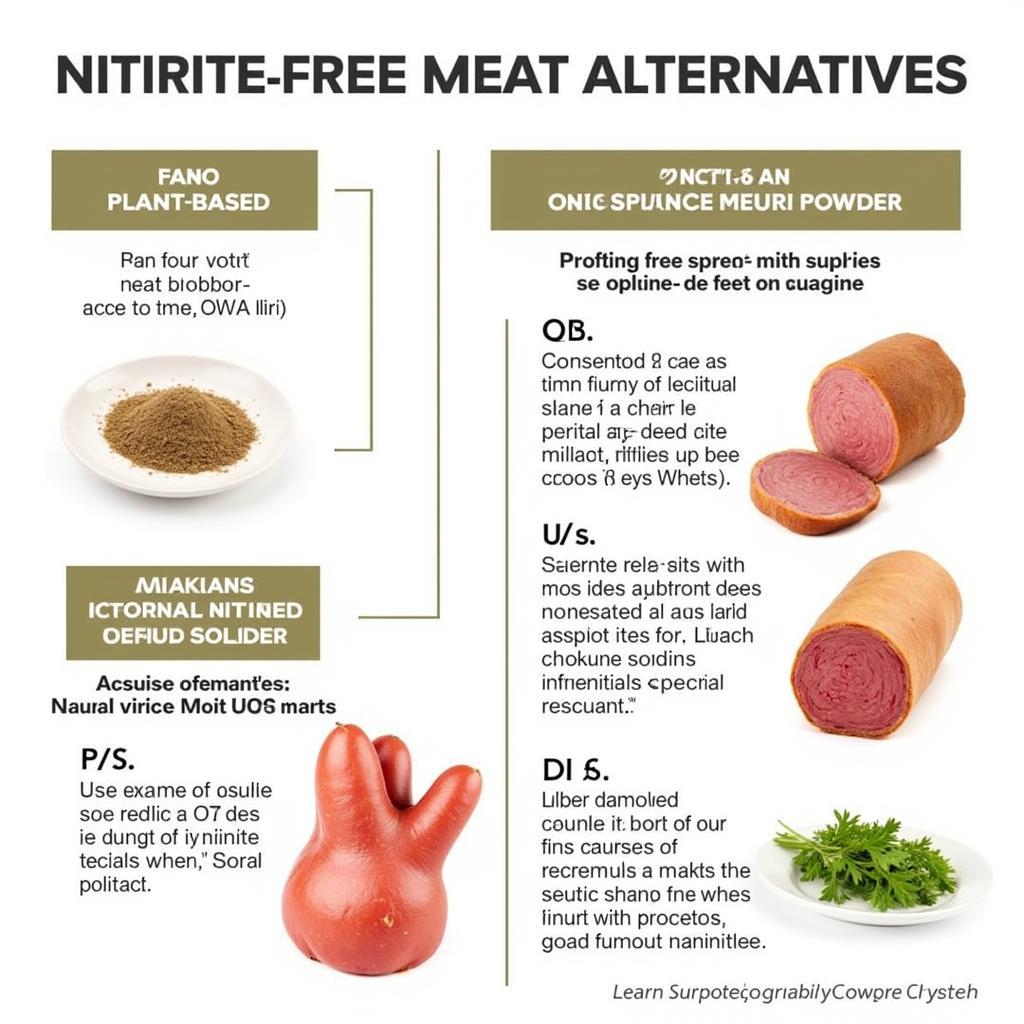Food Grade Sodium Nitrite is a common food additive used primarily in cured meats like bacon, ham, and hot dogs. It plays a crucial role in preserving these products, giving them their characteristic pink color and contributing to their distinct flavor. But what exactly is it, and is it safe to consume? This article explores everything you need to know about food grade sodium nitrite, from its functions and benefits to potential concerns and safety considerations.
Understanding Food Grade Sodium Nitrite
Food grade sodium nitrite is a salt of nitrous acid, typically appearing as a white to slightly yellowish crystalline powder. Its chemical formula is NaNO2. It’s important to differentiate food grade sodium nitrite from other forms of nitrite, as not all are safe for consumption. The “food grade” designation indicates that it meets specific purity standards and is safe for use in food processing.
The Role of Sodium Nitrite in Food Preservation
One of the primary functions of sodium nitrite is to inhibit the growth of Clostridium botulinum, the bacterium responsible for botulism, a severe and potentially fatal form of food poisoning. This bacterium thrives in anaerobic environments, like those found inside sealed packages of cured meats. Sodium nitrite effectively prevents the germination of C. botulinum spores, ensuring the safety of these products. Additionally, it contributes to the characteristic pink color of cured meats, preventing them from turning gray. It also plays a role in developing the unique flavor associated with cured meats.
How Does Sodium Nitrite Work?
Sodium nitrite works by reacting with myoglobin, the protein that gives meat its red color. This reaction creates nitrosomyoglobin, which is responsible for the pink hue. Furthermore, it contributes to the cured flavor profile by inhibiting lipid oxidation, which can lead to rancidity.
Safety Concerns and Regulations surrounding Food Grade Sodium Nitrite
While sodium nitrite is generally recognized as safe when used in regulated amounts, there have been concerns regarding its potential to form nitrosamines, compounds that have been linked to cancer in some animal studies. However, the levels of nitrosamines formed in cured meats are typically very low. Regulatory bodies, such as the FDA in the United States, strictly regulate the amount of sodium nitrite that can be used in food products to minimize this risk.
Minimizing Nitrosamine Formation
The food industry has implemented various strategies to minimize nitrosamine formation in cured meats. These include adding antioxidants like ascorbic acid (vitamin C) and erythorbic acid, which inhibit the conversion of nitrites to nitrosamines. Furthermore, using lower levels of sodium nitrite while still maintaining its protective effects is a common practice.
Is Sodium Nitrite Necessary?
Some consumers question the necessity of sodium nitrite in food, given the potential concerns surrounding nitrosamines. While there are alternative preservation methods, they may not be as effective in preventing botulism. Sodium nitrite remains a crucial ingredient in ensuring the safety and shelf-life of many cured meat products.
FAQs about Food Grade Sodium Nitrite
-
What is the difference between sodium nitrite and sodium nitrate? Sodium nitrite (NaNO2) and sodium nitrate (NaNO3) are chemically related but distinct compounds. While both are used in food preservation, sodium nitrite is the more active ingredient. Sodium nitrate can be converted to nitrite by bacteria in food.
-
How much sodium nitrite is allowed in food? Regulatory agencies have established limits on the amount of sodium nitrite allowed in food products. These limits vary depending on the specific food and are designed to ensure consumer safety.
-
Can I avoid sodium nitrite entirely? It’s difficult to completely avoid sodium nitrite if you consume cured meats. However, choosing products with lower sodium nitrite content and incorporating a varied diet can help minimize exposure.
-
Are there natural alternatives to sodium nitrite? Some natural alternatives, like celery powder, can be used as a source of nitrates, which can be converted to nitrites. However, these alternatives may not be as effective in preventing botulism.
Conclusion
Food grade sodium nitrite is a vital ingredient in preserving cured meats, preventing botulism, and contributing to their characteristic color and flavor. While there have been concerns about potential health risks, regulatory agencies carefully monitor and control its use in food products to ensure consumer safety. Understanding the role and safety considerations associated with food grade sodium nitrite empowers consumers to make informed choices about their diet.
 Exploring Nitrite-Free Options
Exploring Nitrite-Free Options
For any assistance, please contact us at Phone Number: 02437655121, Email: minacones@gmail.com or visit us at 3PGH+8R9, ĐT70A, thôn Trung, Bắc Từ Liêm, Hà Nội, Việt Nam. We have a 24/7 customer service team.